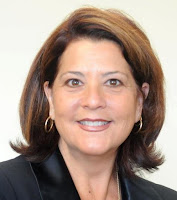 Spirit and breath are the same word in both Hebrew and Greek. So when, in Old or New Testament writings, you read 'spirit' you might also read 'breath' and vice versa.
Spirit and breath are the same word in both Hebrew and Greek. So when, in Old or New Testament writings, you read 'spirit' you might also read 'breath' and vice versa.The Holy Spirit is the Breath of Truth (John 15:26), the Breath of Power (2 Timothy 1:7), but above all the Breath of Christ (Romans 8:9).
The Holy Spirit is always speaking to the church. How could it be otherwise?
The church is the body of Christ, the Bride of Christ. How could the breath not fill the body? How could Christ's Spirit not speak to Christ's Bride?
A new thing - We are at a time when the Spirit is again speaking to the church. Or perhaps it would be more accurate to say we are at a time when the church is again listening to the Spirit. Don't misunderstand me, there are always those in the church who are listening raptly to the Spirit of Christ, but sometimes there is a wider, wholesale hearing that changes all our preconceived ideas and sets the church on a new track. I believe this is such a time.
There are a number of voices now speaking about different aspects of this new thing, and a number of people beginning to see some common themes. What it will become we do not know, but we will know.
Perhaps the central theme is that the Father and the Son and the Spirit matter, that they have a significance we can't overstate. Everyone will say, 'But we already know that!' Well, yes we do, but sometimes we know it in our minds without being driven by it in our hearts.
We know that without him we are nothing, yet without us he is still everything and will, if necessary, raise up the stones to worship him. We know that Jesus said, 'Apart from me you can do nothing' (John 15:5). We know that he said he does only what he sees the Father do (John 5:19), and says only what he hears the Father say (John 12:49-50). We know all these things but we still don't always live them out day by day.
It's all about him first, not us. It's about being in his presence, not being busy with our own stuff. It's really about knowing him, having a close and personal relationship with him - individually and as the church (his Bride).
Bullet points - Having said all that, here's a list of eight aspects that have come to my attention over the last few years. There may be more than this, of course. I've added a reference or two after each one, these are books, articles, or quotes that expand on the topic.
- Forgiveness - Recognising we are forgiven, forgiving one another, 'The Shack'
- Being his people - This trumps doing things for him - Be still and know that I am Elohim (Psalm 46:10), 'It's not about what we do, it's about who he is.' (Paul Young), Eaton Ford - Reflections,
- Living in heaven - We need this daily, Simple gathering of believers, Missing the best
- Building the Lord's house - Haggai 1, A 3 am wake up call
- Command and prophecy - Ezekiel 37
- Blessing, prayer - Ffald-y-Brenin, The Grace Outpouring
- Love - Love him, love one another, love our neighbours, love our enemies - Henry Drummond
- Listening - Paying proper attention to the Holy Spirit, Are you listening?, the need to listen
At first I thought it would be useful to put them in some kind of meaningful sequence, but I couldn't get that to work. I think the reason is that all eight need to be in parallel, not in sequence. In fact they are so intertwined and interdependent that any kind of structure seems to do violence to the underlying truth.
I need to shout this from the rooftops...
Everything we are and everything we do needs to stem from having him full and central in our hearts and minds every day, every minute. Isn't that what it means to be 'grafted in' to Jesus? He is the vine, his Father is the gardener, and we are grafted-in shoots.
Focus ever more fully on Jesus!
Everything we are and everything we do needs to stem from having him full and central in our hearts and minds every day, every minute. Isn't that what it means to be 'grafted in' to Jesus? He is the vine, his Father is the gardener, and we are grafted-in shoots.






